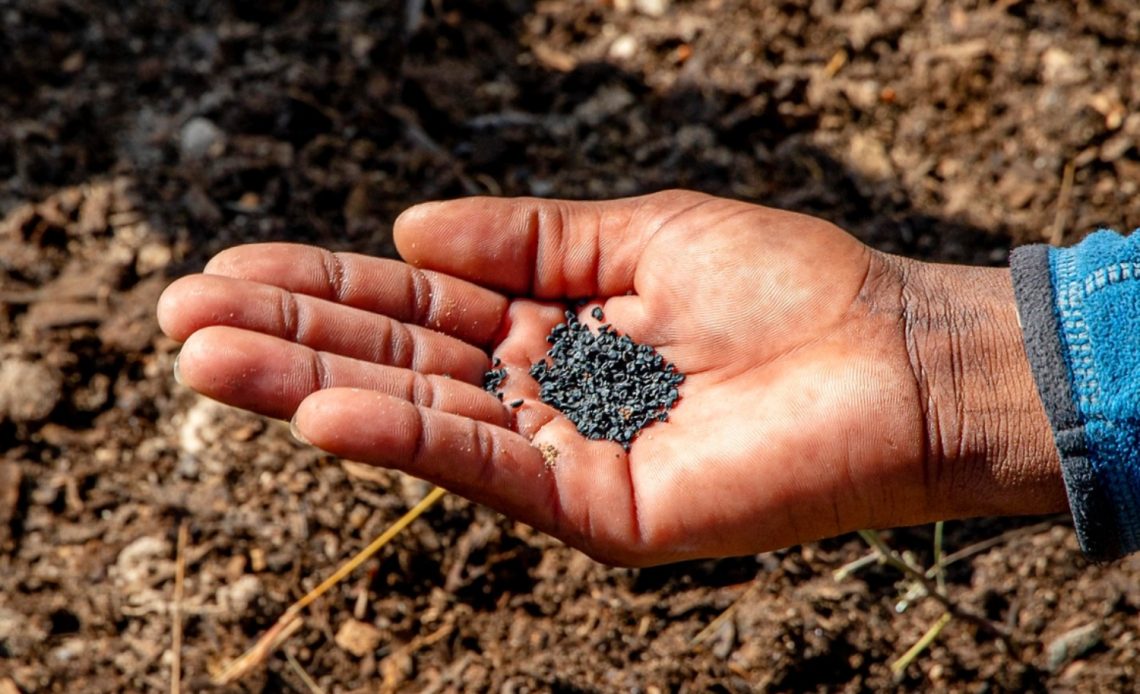

We’re here to help! Wild Yards is a completely free website that is 100% dedicated to helping you create a wildlife-friendly, sustainable yard. Read more
WildYards is reader-supported. When you buy a product through a link on our site, we may earn a comission. Every product is independently selected by our (obsessive) editors and our reviews are unbiased and objective. Read more about our mission or our privacy policy.
You know that your garden needs to be fertilized, but after shopping around for a while, you’re feeling confused, and you have no idea where to start.
You’ve heard that 14-14-14 is a good all-purpose fertilizer, but you’re not sure how it works and what makes it so great.
Why is 14-14-14 fertilizer broken down into three numbers?
What do these numbers represent, and how do they affect your plants?
Understanding what 14-14-14 fertilizer is will help you determine whether or not the plants in your garden need it.
Triple 14 fertilizer contains 14% nitrogen, 14% phosphorus, and 14% potassium — the three nutrients your plants need most. Triple 14 is an excellent all-purpose fertilizer, suitable for lawns, trees, shrubs, fruits, and vegetables.
What is 14-14-14?
Triple 14 is a balanced fertilizer and a popular choice for lawns and gardens. But what do the numbers in 14-14-14 represent?
Like other fertilizers, triple 14 is broken down into an NPK ratio, with each number representing the percentage of nitrogen (N), phosphorus (P), and potassium (K) the fertilizer contains.
Although plants rely on a variety of vitamins and minerals to stay healthy, they rely on nitrogen, phosphorus, and potassium the most.
But what makes these three elements so important to plants? Let’s find out.
Nitrogen
Plants use nitrogen to make chlorophyll. This group of green pigments allows plants to capture sunlight and use it to turn the water, nutrients, and carbon dioxide they absorb into energy for themselves.
Nitrogen is the most important element for plant growth because, without it, plants cannot produce chlorophyll.
Plants that are struggling with low nitrogen will develop pale green to yellow foliage. Older leaves are the first to be affected, turning yellow and dropping off.
Nitrogen deficiency results in accelerated root growth, compared to shoot growth. You may notice new shoots sprouting up, but failing to develop before turning yellow and dying back.
Without nitrogen, plants cannot grow well, and their growth rate will be stunted.
Plants that are known for their foliage, including lawn turf, evergreens, and shrubs, typically have higher nitrogen requirements than other plants and are most likely to be affected by nitrogen deficiency.
However, any plant can struggle with nitrogen deficiency, especially when planted in nitrogen-deficient soils.
Phosphorus
While nitrogen supports healthy foliage development, phosphorus plays a crucial role in the flowering and fruiting process.
Plants rely on phosphorus to reproduce. This means phosphorus is especially important for fruits and vegetables, as well as flowering ornamental plants like bromeliads and other star-shaped flowers.
Of course, phosphorus does more than support healthy reproduction.
Plants also rely on phosphorus to photosynthesize and transfer food to all parts of the plant, from the roots to the leaves.
Phosphorus helps plants produce strong root systems. This is especially helpful for newly transplanted plants, as it allows them to get established quickly, reducing the risk of transplant shock.
Phosphorus enables plants to use other nutrients, including nitrogen, effectively. It’s also critical for the replication of genetic material, including DNA and RNA.
Symptoms of phosphorus deficiency in plants include blue-green or red foliage and small leaves.
Potassium
Potassium supports a plant’s resilience to extreme conditions.
Whether it’s a drought, a cold snap, or a heat wave, potassium enables plants to survive these stressful situations without incurring too much damage.
Potassium regulates water intake and prevents plants from losing too much moisture during respiration. This helps prevent plants from wilting.
This macronutrient also assists in the transfer of energy, enabling sugars to reach all parts of the plant.
It’s also worth noting that potassium plays a pivotal role in disease and pest resistance.
Potassium keeps your plant’s immune system in tip-top condition so the plant can fight off pathogens and even mild to moderate insect infestations.
Like phosphorus, potassium supports healthy root growth and can be helpful when transplanting seedlings to prevent them from getting too stressed.
When potassium levels are low, plants are more likely to wilt. New leaves remain stunted, and mature leaves develop a bronzed appearance.
3 Types of triple 14 fertilizer
Not all 14-14-14 fertilizers are the same. Some will work better for your needs than others.
Understanding the differences between these fertilizers will help you choose the best one for your lawn and garden.
Here are some of the most common types of triple 14 fertilizers.
Water-soluble
This type of triple 14 fertilizer comes in a powdered form. Water-soluble fertilizers contain nitrogen, phosphorus, and potassium that have been mixed with an inert filler, like gypsum, to allow for even application.
Water-soluble fertilizers have three main benefits to offer.
First, they’re easy to find. These synthetic commercial fertilizers are widely available at feed stores and garden centers.
Second, water-soluble fertilizers are inexpensive. Of all of the fertilizer types mentioned here, water-soluble ones are the cheapest, and saving money is always a good thing!
Lastly, they’re fast-acting. Apply triple 14 to dry lawn or sprinkle the appropriate dose around growing plants, water them well, and you’re done. Your plants will enjoy the fertilizer’s effects immediately.
If your plants are running low on nitrogen, phosphorus, and potassium and they need help fast, water-soluble fertilizers are the best choice. This type of fertilizer will keep your plants fed for weeks to months.
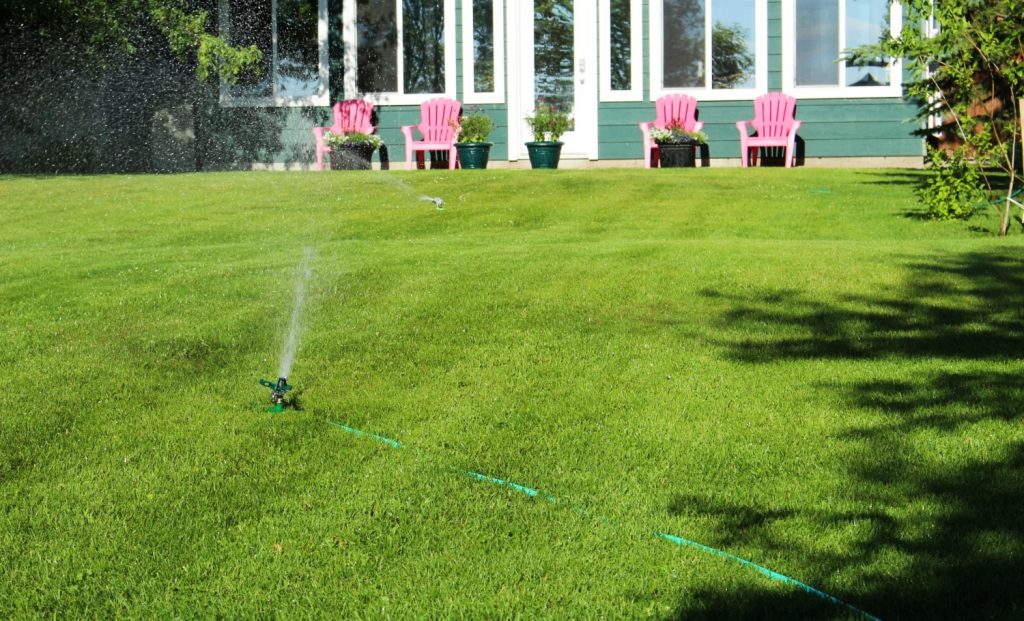
Slow-release granules
If you have a bit more wiggle room in your fertilizer budget, opt for a slow-release granulated triple 14.
These granules can be spread just like water-soluble fertilizers. Simply sprinkle the fertilizer at the base of growing plants, or use a broadcast spreader to apply the fertilizer to a bigger area.
Once the fertilizer has been applied, water the plants well to activate it.
Slow-release granules will keep your plants fed for months at a time.
Depending on your native soil’s nutritional content, you may find you only need to apply slow-release triple 14 once or twice per growing season.
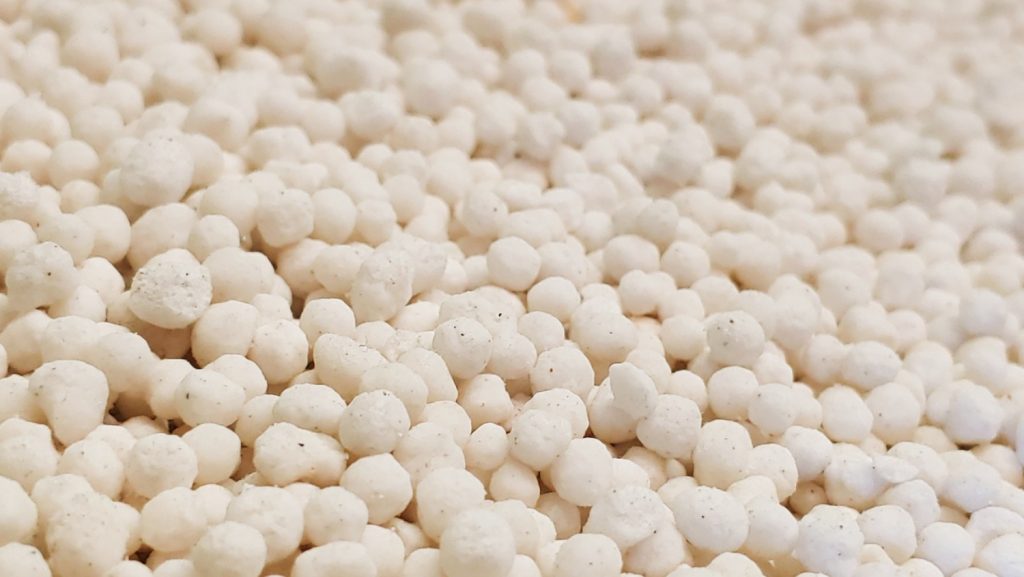
Spikes
Spike fertilizers work best if you’re trying to “spot-treat” certain plants in your garden.
Say your new ‘Autumn Blaze’ red maple needs an extra burst of nutrients to help it get established, or the elephant ears you just propagated require some added nutrition.
Tapping a fertilizer spike into place with a hammer will provide surrounding plants with a steady supply of nitrogen, phosphorus, and potassium for quite a while.
In general, fertilizer spikes can keep plants fed for months, even up to a year, depending on the nutritional makeup of your soil.
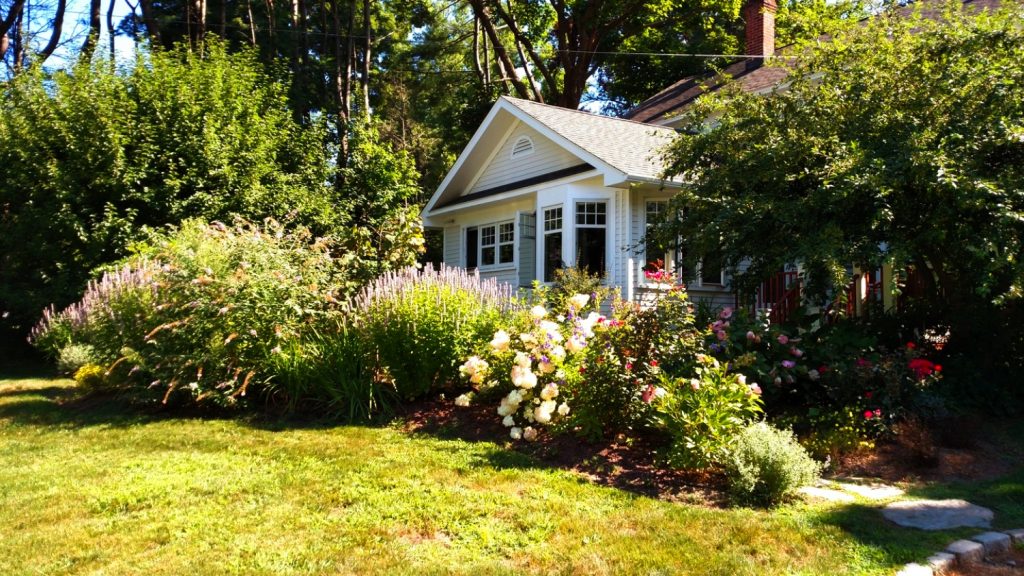
When should you apply 14-14-14 fertilizer to your lawn?
Triple 14 is a good choice of fertilizer for lawns that are low on nutrients, but still have a good NPK ratio.
A 14-14-14 fertilizer brings nitrogen, phosphorus, and potassium levels up evenly so as not to create other nutritional imbalances.
If your lawn has been looking a little sickly lately, with a yellow tint and dry patches here and there, that’s a sign it could use some extra help.
Applying a triple 14 fertilizer will help improve your lawn’s health and appearance. Depending on which type of fertilizer you use, it can even keep your lawn fed for months.
Of course, you should always test your soil before applying any fertilizer to avoid adding too much of one nutrient, or not enough of another.
However, 14-14-14 is a moderate dose, general-purpose fertilizer that provides a healthy dose of the three nutrients plants need most.
While triple 14 may not be a custom-fitted fertilizer, tailored to the needs of your lawn, it’s a great starting point.

When should you apply 14-14-14 fertilizer to your garden?
Gardens need to be fertilized regularly. As we harvest fruits and vegetables, we rob the soil of nutrients, and if we don’t replace those nutrients, then our crops can’t produce.
If your garden has been underperforming in recent weeks, then you should test the soil to get a clearer picture of what’s going on.
If you’ve determined that your fruits and veggies need more nitrogen, phosphorus, and potassium, and in equal doses, then triple 14 can be used to boost their performance.
Apply water-soluble or slow-release granulated triple 14 to the base of your plants, and water them deeply so they can access the nutrients.
Once your garden’s nutritional needs have been met, you’ll notice a quick improvement in its performance.
If you’re still in the process of preparing your beds, you don’t need to wait until you’ve planted your seedlings before fertilizing.
Simply add triple 14 to your garden soil, plant your fruits and veggies, water them regularly, and you’ll be good to go.
Triple 14 is a great choice of fertilizer for tomatoes, peppers, melons, squash, and many other garden favorites, which rely on a balanced ratio of nitrogen, phosphorus, and potassium to grow well.
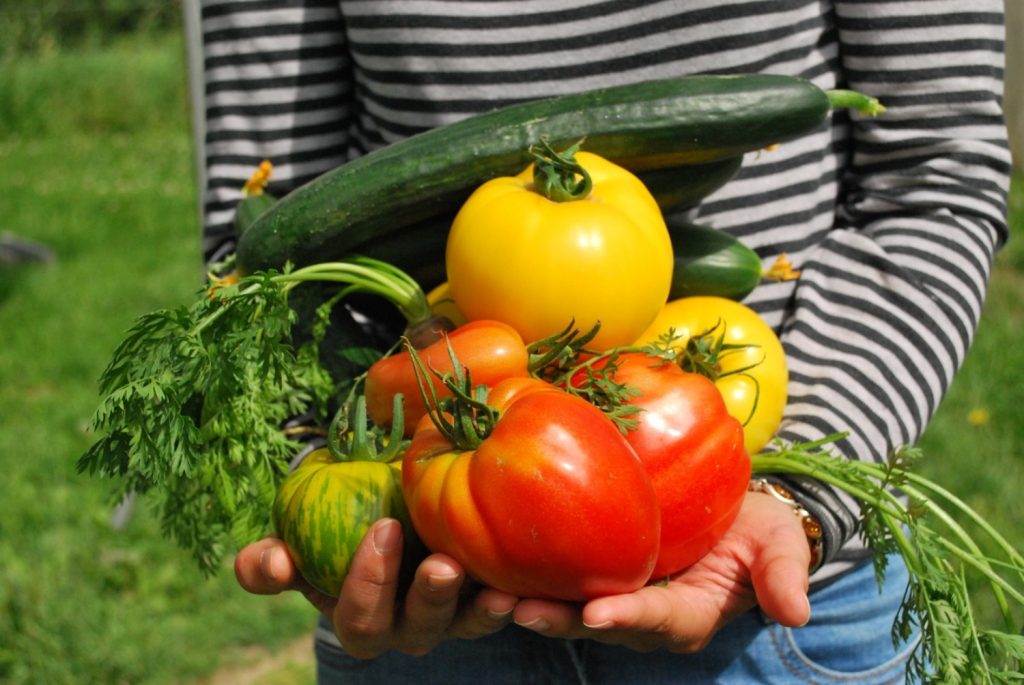
How often should you use triple 14 fertilizer?
Because fruits and veggies tend to use up nutrients much faster than a lawn, you’ll need to test your garden soil throughout the growing season to ensure you apply enough triple 14, and to make adjustments to your fertilizing schedule as needed.
In general, it’s best to apply triple 14 once every 12 to 18 weeks. Water-soluble fertilizers need to be applied more frequently than slow-release granules.
Lawns typically don’t need to be fertilized as often, especially if you don’t rake up your lawn trimmings and instead allow them to decompose and nourish the soil.
Although you should dethatch your lawn if the thatch becomes too thick, a small amount of thatch keeps your grass healthy.
For healthy lawns, we recommend fertilizing with triple 14 once in the early spring.
If your lawn requires more nutrition than that, a soil test will help you determine how often you’ll need to reapply 14-14-14.
Remember never to apply fertilizers in late fall or in the winter months.
Plants cannot absorb nutrients when they’re dormant. Applying fertilizers to plants during this time leaves the nutrients in the soil where they can burn the plant’s roots, killing them.
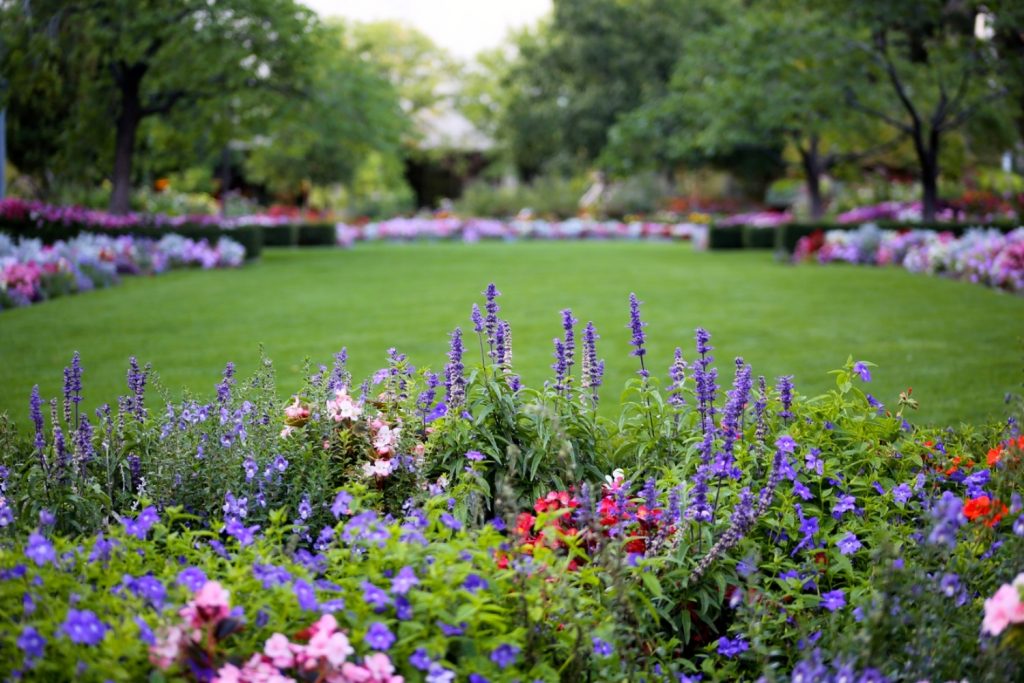
Is triple 14 organic?
Triple 14 fertilizers are not organic unless the manufacturer explicitly says so.
Water-soluble, slow-release granules, and fertilizer spikes are all comprised of synthetic nitrogen, phosphorus, and potassium.
Although these ingredients are designed to be easy for plants to absorb, they are not natural.
So even though they may improve your plant’s health, they are not an appropriate choice of fertilizer for organic gardens.
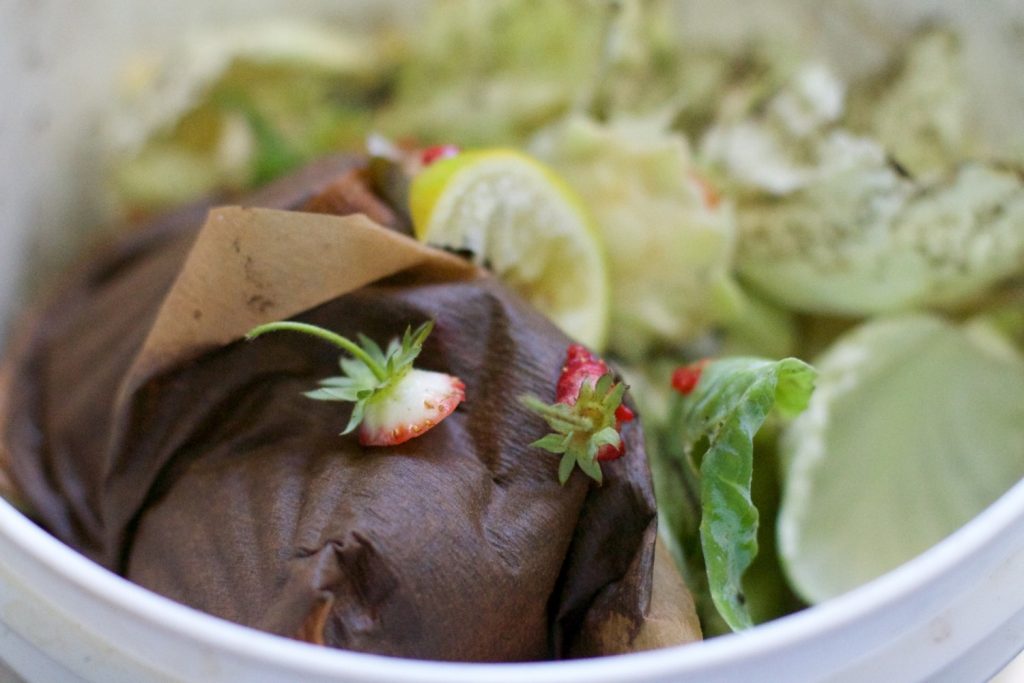
All-natural substitutes for 14-14-14 fertilizers
If you would rather avoid using synthetic fertilizers, you can create your own balanced fertilizer using organic materials instead.
Well, you can as long as you don’t mind getting your hands dirty!
To create your own organic balanced fertilizer that delivers moderate doses of nitrogen, phosphorus, and potassium, you’ll need to combine biodegradable ingredients that are rich in these three ingredients.
Your homemade mixture might include high-nitrogen fertilizers like hoof and horn meal, combined with a high-phosphorus fertilizer like bone meal and a high-potassium fertilizer like wood ash.
Using a variety of organic materials supplies your plants with nitrogen, phosphorus, and potassium, as well as trace nutrients, like iron, calcium, zinc, and magnesium (rice water delivers a healthy dose of trace nutrients, too!).
Organic materials further support healthy plants by feeding the beneficial bacteria in the soil.
These bacteria make it easier for your plants to absorb nutrients, and help your plants develop strong immune systems so they can ward off insects and diseases.
Are there any downsides to using 14-14-14 fertilizer?
It is worth mentioning that the over-application of triple 14, or any other fertilizer, can have detrimental effects on the environment.
Too much nitrogen and phosphorus can seep into waterways, leading to eutrophication, an unhealthy bloom in phytoplankton and water plants. This contaminates the water supply for livestock and other agricultural purposes.
High doses of nitrogen, phosphorus, and potassium can inadvertently lower levels of micronutrients, including zinc, calcium, and magnesium, too, resulting in other nutritional deficiencies.
Overall, while triple 14 can greatly enhance your plant’s performance, you should always be careful to avoid applying too much, as it could do more harm than good.
By testing your soil annually, and educating yourself about your plant’s nutritional needs, you can use triple 14 effectively to support the grass, flowers, fruits, and veggies in your lawn and garden.
